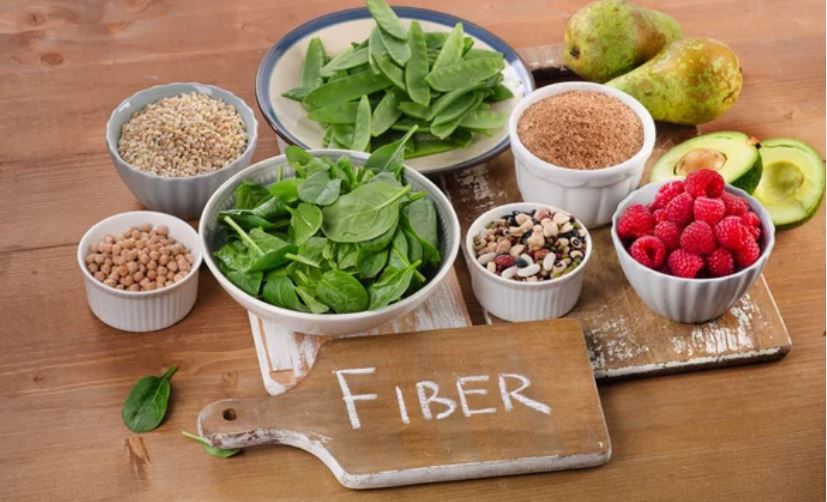Maintaining a healthy gut is essential for overall well-being. A balanced gut microbiome supports digestion, strengthens the immune system, and can even influence mood and mental health. One of the most effective ways to promote gut health is through dietary fiber. But not all fibers are created equal, and incorporating a variety of fiber sources into your diet can offer multiple benefits.
Here’s a comprehensive guide on how to support your gut health with diverse fiber sources.
Understanding Dietary Fiber
Dietary fiber is a type of carbohydrate that the body cannot digest. Unlike other carbohydrates, fiber passes through the digestive system relatively intact, providing numerous benefits along the way. There are two main types of fiber:
- Soluble Fiber: Dissolves in water to form a gel-like substance. It can help lower blood sugar levels and reduce cholesterol. Sources include oats, apples, and beans.
- Insoluble Fiber: Does not dissolve in water and adds bulk to the stool, aiding in regular bowel movements. Sources include whole grains, nuts, and vegetables.
A healthy gut benefits from a mix of both types of fiber, as each plays a different role in maintaining gut function and microbiome balance.
Benefits of Diverse Fiber Sources
- Enhances Gut Microbiome Diversity:
- Different types of fiber feed different kinds of beneficial bacteria in the gut. By consuming a variety of fiber sources, you encourage a diverse microbiome, which is associated with better health outcomes.
- Improves Digestive Health:
- Soluble fiber can help manage blood sugar levels and cholesterol, while insoluble fiber aids in regular bowel movements and prevents constipation. Together, they support overall digestive health and function.
- Supports Immune Function:
- A healthy gut microbiome plays a crucial role in immune system function. By providing diverse fiber sources, you help maintain a balanced microbiome that supports a robust immune response.
- Aids in Weight Management:
- High-fiber foods tend to be more filling, which can help control appetite and reduce overall calorie intake. Additionally, fiber slows down digestion, leading to a more gradual release of energy.
- Boosts Mental Health:
- Emerging research suggests that gut health can impact mental well-being. A diverse gut microbiome, supported by varied fiber sources, may contribute to improved mood and reduced symptoms of anxiety and depression.
Practical Tips for Incorporating Diverse Fiber Sources
- Start with Whole Grains:
- Oats, quinoa, and brown rice are excellent sources of soluble fiber and provide a solid foundation for a fiber-rich diet. Try starting your day with a bowl of oatmeal or a quinoa salad.
- Include a Variety of Fruits and Vegetables:
- Apples, pears, berries, and citrus fruits are rich in soluble fiber, while carrots, bell peppers, and leafy greens offer insoluble fiber. Aim to fill half your plate with vegetables and fruits at each meal.
- Incorporate Legumes:
- Beans, lentils, and chickpeas are fantastic sources of both soluble and insoluble fiber. Add them to soups, stews, or salads to boost fiber content.
- Snack on Nuts and Seeds:
- Almonds, chia seeds, and flaxseeds provide fiber along with healthy fats. Use them as toppings for yogurt, add them to smoothies, or enjoy them as a snack.
- Experiment with Fiber-Rich Foods:
- Explore less common sources of fiber, such as seaweed, artichokes, and barley. These foods offer unique types of fiber and can add variety to your diet.
- Try High-Fiber Alternatives:
- Substitute refined grains with whole grains, such as using whole-wheat pasta instead of regular pasta, or whole-grain bread instead of white bread.
- Stay Hydrated:
- Fiber works best when accompanied by adequate hydration. Drink plenty of water throughout the day to help fiber move through your digestive system effectively.
Sample High-Fiber Meal Plan
Breakfast:
- Oatmeal topped with berries and chia seeds.
Lunch:
- Quinoa salad with chickpeas, bell peppers, and spinach.
Snack:
- Apple slices with a handful of almonds.
Dinner:
- Lentil soup with carrots and celery, served with a side of whole-grain bread.
Dessert:
- Yogurt with flaxseeds and a sprinkle of berries.
Conclusion
Supporting gut health with diverse fiber sources is a simple yet powerful way to enhance your overall well-being. By incorporating a variety of fiber-rich foods into your diet, you can promote a balanced gut microbiome, improve digestion, and support overall health. Remember to start gradually, listen to your body, and enjoy the journey towards a healthier gut.
